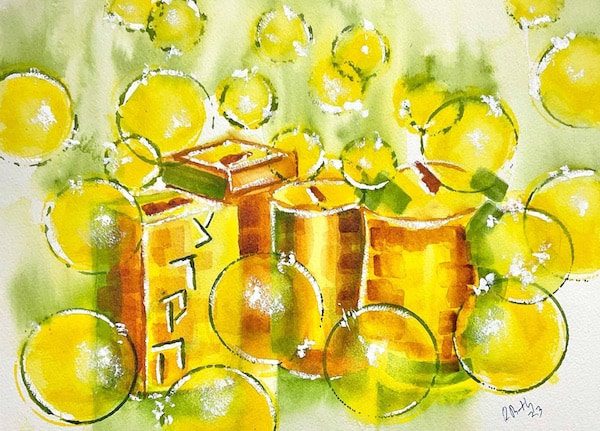The tzedakah box, or pushka sometimes spelled pushke, is a small, often decorative container used in Jewish tradition to collect charitable donations. Its significance extends beyond mere functionality; it embodies the values of charity, community support, and social responsibility. In this post, we discuss the history of the tzedakah box, and also look at different designs and styles past and present.

The Origin of Giving Tzedakah
The concept of tzedakah originates from the Hebrew word “tzedek,” which means justice or righteousness. The word pushka is a Yiddish word rooted in the Polish word for a can. In Jewish tradition, giving to those in need is not just an act of kindness but a moral obligation. This principle is deeply rooted in the Torah, where numerous commandments encourage generosity and support for the less fortunate.
The History of the Tzedakah Box
The history of the tzedakah box goes back to ancient times. During the Temple period in Jerusalem, communal funds were collected for various purposes, including the support of the poor and funding religious obligations. As Jewish communities evolved, so did the methods of collecting and distributing charitable contributions.
We find the first prototype of an actual tzedakah box employed during the First Temple. The High Priest, or Kohen Gadol, placed a box with a hole in the top near the altar. The money collected in this box funded repairs for the Temple.
Responding to oppression by surrounding cultures throughout history, Jewish communities increased efforts to help their brethren in need. By the end of the eighteenth century, tzedakah boxes were a fixture in every Jewish home.
History of the Tzedakah Box Design in 19th Century Europe



Vintage tzedakah boxes courtesy of The Jewish Museum
Modern Tzedakah Box Design
In modern times, the tzedakah box resides in Jewish homes, synagogues, and institutions. These containers come in various materials, shapes, sizes, and styles. The styles of the modern tzedakah box often reflects personal tastes and cultural backgrounds, ranging from intricately decorated to minimalistic.
No matter the style, the tzedakah box serves as a visible reminder of the community’s responsibility to care for its members.
More on Judaica in Art: The Role of a Silver Kiddush Cup: Beautifying the Mitzvah
Discover more from Rhonda Roth Art
Subscribe to get the latest posts sent to your email.


